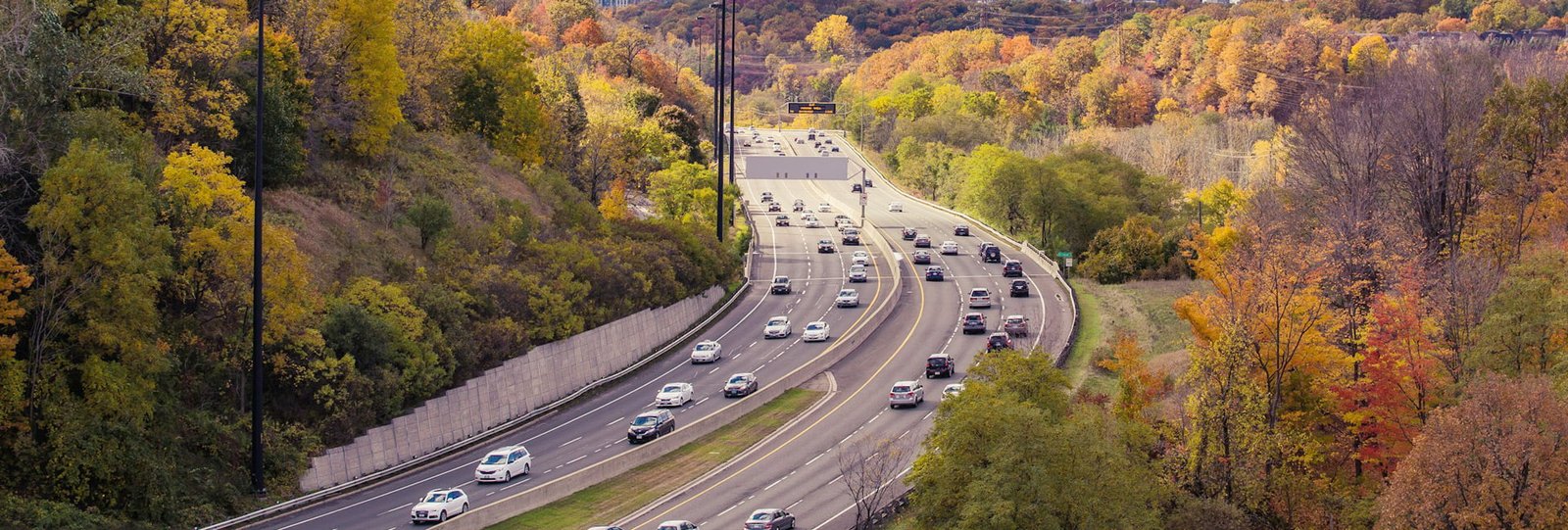Theme Definition: Transportation focuses on the movement of goods and people. It addresses issues of reduced impact of travel on nature, travel options and distance, finding alternatives for car-reliant cities, safety, mobility, accessibility, and reducing fossil fuel dependency.
Suggested Sub-Themes: non-motorized travel, public transit, transportation of goods and services, vacation and business travel.
Every day we make decisions on transportation:
- How will our children go to school?
- How will we ship parcels or materials?
- Will we drive to work, carpool or take the bus?
Below, you will find a discussion paper on Transportation.
Transportation in Ottawa: A Greener Vision.
1) Introduction: The nature of the problem
Currently our transportation system is heavily weighted toward the car. So is the manner in which we continue to build new subdivisions. How transportation and land is planned and used are mutually and inextricable linked. The ongoing popularly of the car facilitates the familiar suburban development of single-family houses on increasingly large lots and permits us to spatially segregate various land uses. Cars continue to demand and receive a larger portion of the available land.
In the end we get to where we are; living in one place, working in another while recreating and shopping in yet other places. These places are linked with highways and roads not with paths. Transit is of limited utility as not enough of us are going using the same routes or have the same destinations. Final result is near complete car dependence.
Our current land and transportation planning efforts appear to be reinforcing past mistakes rather than migrating them. Even our debates around mass transit systems in Ottawa miss the point. We are planning to spend billions to improve transit access to downtown while job growth is largely out of the core. We plan investments in expensive tunnels (through hard rock) rather than find ways to optimize and improve upon the existing bus rapid transit system. We continue to build on a hub and spoke style of transit planning when what is needed is building a grid.
2) The current situation:
Look at Barrhaven (Farhaven) or Stittsville or any of the other communities outside of the greenbelt and you will see the same plans, the same mistakes repeated and even celebrated. Try to walk to a local store, or cycle to work or use transit to get to a doctor’s appointment in any of these neighbourhoods. Of course it is possible but it is usually time consuming and often simply unpleasant.
Even within the green belt we have built a car-centric transportation infrastructure – try to walk along Carling Avenue anywhere, try to cross the street. It is not surprising that you regularly see bikes on sidewalks – there are few pedestrians anyway the bike riders are simply making a logical choice.
Commute by bike to downtown and you either find yourself on car centered roads with cars passing you at 80 kms/hr or you are on recreational paths that do not bring you in a direct way to most anywhere you may need to get to and are often crowded with walkers, children, inexperienced riders and simply folk out for a little contact with nature.
We are fortunate to have a terrific transit system, if you are going to and from downtown. I think that the Transitway is a brilliant piece of infrastructure that is not being used to its potential. Ottawa, I believe, does not need a subway or a new light rail system. (Using existing tracks is a good idea) Ottawa already has a “subway” but does not recognize it
as such. The Transitway ought to be used like a subway with feeder buses bringing commuters to stations and then buses on very short headways moving along the Transitway. The Transitway ought to be extended in a grid manner so that a commuter can take a direct route across the south of the city from Orleans to Kanata and have a viable alternative to driving.
3) The Vision:
Ottawa’s transportation system will become focused upon people over cars. This means moving the emphasis from mobility to access. Give people access to their needs within their neighbourhoods including opportunities for work without have to move quite so much.
Mobility is provided to the employment centers such as the downtown core and Kanata’s high tech corridor with direct, convenient and pleasant transit and active transportation links. But also make these business and employment centers more diverse with places to live, shop and access services, as well as work.
Technology is making this decentralization possible. Tele-work and telecommuting are increasing accepted by employers; the development of satellite offices is also growing more common. No longer do office workers need to travel for 30 to 60 minutes in a 1 to 2 ton vehicle to simply have a phone in an office.
Purely residential districts see both an increase in residential density and a greater mixture of use including places to shop and to work in meaningful jobs. Quiet streets have become people priority zones where the community members, children and adults alike, use the street as communal space for walking and playing and where cars are secondary to people.
Both within neighbourhoods and between them there are strong active transportation links including a bicycle only infrastructure. Bikes need both a different set of infrastructure – on road and off, shared and exclusive and a different set of rules
4) Getting to the Vision:
There are many paths that lead toward a more sustainable transportation system. It is important that better alternatives to the car be developed and built in advance of reducing car-dependence. People will not reduce car use without good and affordable alternatives.
The first steps are to reform the mass transit system and to build a viable active transportation network. Specifically the mass transit system in Ottawa requires fundamental rethought. If built around a rational grid that feeds an improved bus rapid transit system more people will have quicker and more pleasant commutes. Part of the cost will be the loss of long convoluted routes that require no transfer to get downtown. This ought to facilitate improved transit access for destinations away form the core of the city.
Zoning and land planning has to permit, even mandate, mixed use and create opportunities for people to live more of their lives within their neighbourhoods. It is interesting to note that high property values are found in mixed use and dense communities such as Westboro, New Edinburgh and the Glebe, while housing in Barrhaven is less costly. Westboro, New Edinburgh and the Glebe are all communities that are walkable, are based upon a grid; have shopping streets rather than big box stores and support locally owned businesses.
New subdivisions ought to be built with active and mass transportation rather than the car as the priority transportation modes. Grid systems should be imposed to reduce walking distances, to facilitate transit access and permit greater densities. Commercial streets should be encouraged over strip malls and big box stores. Overall the space dedicated to cars must be reduced while the walking/biking/transit environments must become more people focused.
To accomplish an Ottawa that has a more sustainable transportation system will require real political bravery. Many people will have to adapt to a style of commuting and neighbourhoods will have to accept various styles of housing and a greater mixture land uses. There will be significant opposition to the necessary changes and that opposition must be honored and where possible accommodated. But the changes must ultimately be made.
A note on cars: As stated above the personal vehicle is not going away anytime soon. We need to improve our fleet fuel consumption rapidly. Changing our urban design and our urban planning priorities will take decades – time that we really do not have, where as changing consumption standards can be done very quickly. Better vehicle fuels may also be part of the solution as long as we proceed carefully so as to not make one step forward and two back. Tax and regulatory policies need to be reviewed and changed to create an environment supportive of more efficient cars and cleaner fuels. This needs to happen soon and can only be done by upper levels of government – especially the Federal government. Municipal governments can only support such change.
Don Houston: Draft 2, August 7, 2009

